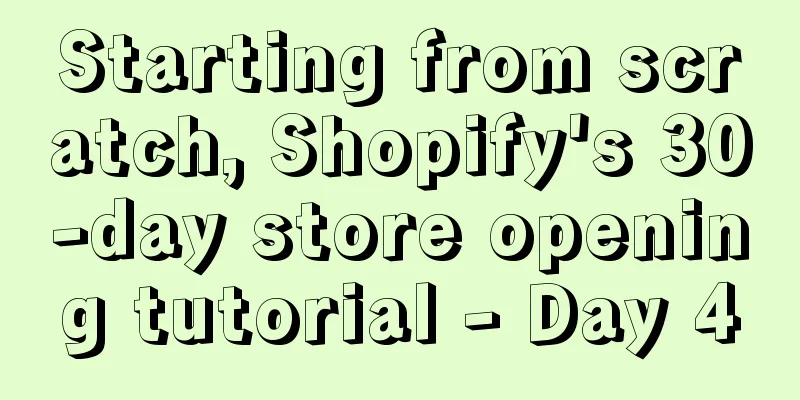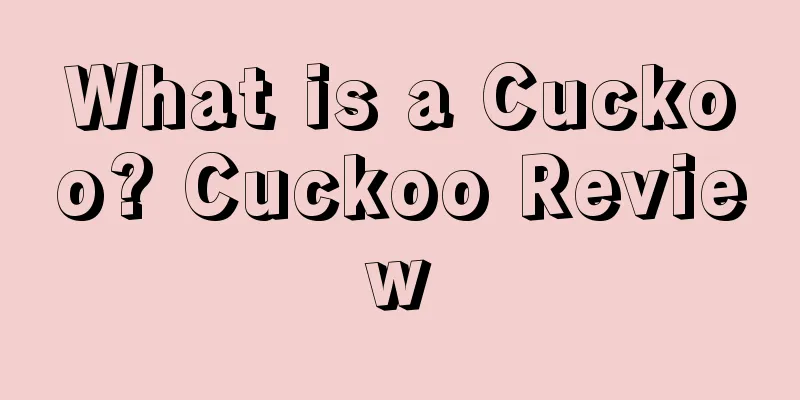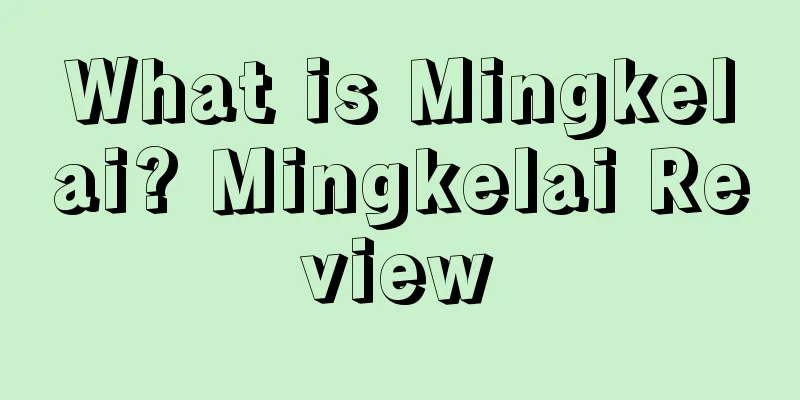What is a Work-Related Invention? Work-Related Invention Assessment

|
A work invention refers to a work invention or creation completed by the staff of an enterprise, institution, social group, state agency, etc. in the performance of the unit's tasks or mainly using the unit's material conditions. In the Patent Law, this relationship is mainly reflected in the issue of the ownership of the inventions and creations completed by employees, that is, whether the inventions and creations completed by employees are work inventions or non-work inventions and creations. In principle, the solution to this problem should comply with the principle of "contracts prevail over laws", that is, the ownership of the rights to the results of inventions and creations should first be resolved in accordance with the agreement in the labor contract. Classification of patents Interpretation Article 6 of the Patent Law of my country stipulates that "inventions and creations completed in the performance of tasks of the unit or mainly using the material and technical conditions of the unit are work inventions and creations." In order to further clarify the specific circumstances of "work inventions", Article 12 of the Implementing Rules of the Patent Law also defines its connotation and summarizes it into two situations: First, "work inventions and creations completed in the performance of tasks of the unit" mainly include: 1. Inventions and creations made in the performance of tasks other than the work assigned by the unit; 3. Inventions and creations related to the work undertaken in the original unit or the tasks assigned by the original unit made within one year after retirement, transfer from the original unit or termination of labor and personnel relations. This gives "work inventions" a clearer connotation. Second, "inventions and creations completed using the material conditions of the unit" The material conditions here mainly refer to the unit's funds, equipment, parts, raw materials or technical information not disclosed to the public. In order to resolve the recognition disputes over work-related inventions caused by the flow of talent in real life, the "Implementing Rules of the Patent Law" also include "temporary work unit" in the conceptual connotation of "this unit" as referred to in Article 6 of the "Patent Law". Basic Features Separability of the subject In work-related inventions and creations, the person who completes the invention and creation is a natural person who is an employee. He or she enjoys the identity right of the right to author the invention and creation, while the right to apply for a patent and the patent right belong to the unit. In non-work-related inventions, both the right to authorship and the right to apply for a patent and the patent right belong only to the inventor and designer himself or herself. Differences from related concepts Work-related inventions and non-work-related inventions my country's Patent Law only stipulates the application treatment of non-service patents, but does not make clear provisions for "non-service inventions". From the perspective of the patent generation process, any invention is completed by a natural person, so as the creator of this intangible property, the inventor should have full rights to the property, that is, the right to apply for a patent and the right to control and utilize it. However, in real life, due to the limited social resources and intellectual resources possessed by natural individuals, natural individuals must rely on the material conditions of the unit based on the labor contract relationship to advance the corresponding research process until the corresponding invention is completed. Non-service invention refers to inventions that are completely separated from the labor contract relationship with the unit and rely on their own material and technical conditions. The difference between the two is mainly reflected in the ownership of the rights of inventions and creations. For non-employment inventions, only the inventor or designer of the invention or creation can be the patent applicant. After the patent application is approved, the patent owner can enjoy the exclusive right to possess, use, benefit from, and dispose of the invention or creation, as well as exclude any other person, thereby controlling the prohibition right of the patent. However, in the case of service inventions and creations, although the natural person is the subject of the invention or creation, the patent application right for the invention or creation to become a patent belongs to the unit, and the natural person as the inventor does not enjoy the right to control the completed invention or creation and the prohibition right to exclude others from using it. Article 16 of my country's Patent Law stipulates: "The unit granted the patent right shall reward the inventor or designer of the service invention or creation. After the invention or creation patent is implemented, the inventor or designer shall be given reasonable remuneration based on the scope of its promotion and application and the economic benefits achieved." Therefore, it can be considered that after the patent application right of the inventor in the service invention belongs to the unit, the only possibility left is to obtain the unit's reward and remuneration, but the specific form of the reward and the reasonable degree of remuneration are not clearly stipulated in the Patent Law. Work inventions and collaborative and commissioned inventions Article 8 of my country's Patent Law defines collaborative invention as "an invention or creation completed by cooperation between two or more units or individuals, or an invention or creation completed by one unit or individual on behalf of other units or individuals". It can be seen from the provisions of the legal text that the creation of collaborative inventions is based on a collaborative or commissioning relationship. There are certain similarities between collaborative inventions and work inventions, that is, in the case of collaborative inventions, there may also be situations where individuals and units are linked. However, unlike the unequal status between workers and employers based on the labor contract relationship in work inventions, in collaborative inventions, individuals cooperate with units based on a commission contract relationship. As a consensual and bilateral contract, the two parties to the commission contract are on an equal footing both in the legal relationship and in the actual relationship. It is precisely because of this difference in legal status that the inventors in the collaborative invention, after the invention is completed, enjoy the right to apply for a patent, unless otherwise agreed, and become patent owners after the application is approved, thereby enjoying relatively complete rights to the invention. Common types Work-related inventions are divided into two categories: (I) The first category is inventions and creations completed in the execution of tasks of the unit. It includes the following three situations: (1) Inventions and creations completed by the inventor in the course of his/her job; According to the labor contract signed between the employee and the employer, the employer has the obligation to pay remuneration to the employee, and completing the labor tasks within the scope of the contract is the basic obligation of the employee. Therefore, the labor results created by the employee at this time should belong to the employer. (2) Inventions and creations completed while performing tasks related to one’s job assigned by the unit; In real life, employees of a unit not only have to undertake work within the scope of their job duties, but also accept tasks assigned by the unit that are outside of their job duties. Therefore, there are two different understandings of the term “tasks of the unit” in the law. Performing tasks outside of one’s job duties assigned by the unit usually refers to short-term or temporary work tasks assigned by the unit, such as cooperative development, organizing research, and accepting research commissions. The completion of these tasks is closely related to the unit’s macro-guidance, the formulation of specific plans, the assumption of responsibilities, and the necessary material conditions, so they should be classified as job inventions and creations. (3) inventions and creations made within one year after resignation, retirement or job transfer, which are related to the original work undertaken by the original unit or the tasks assigned by the unit; (ii) The other category is inventions and creations that are mainly completed by using the material conditions of the unit (including funds, equipment, parts, raw materials or technical information not disclosed to the outside, etc.); however, if only a small amount of the material and technical conditions of the unit are used, and the use of such material conditions is irrelevant to the completion of the invention and creation, it cannot be determined as a work-related invention and creation. Basic content Relevant entities involved In work-related inventions and creations, the relevant entities involved are: the employer and the inventor. Specific rights and obligations 1. Rights and obligations of inventors Although the patent application right and patent right of work-related inventions belong to the unit where the inventor or designer works, the inventor or designer also enjoys some rights. Specifically: Right of signature. Signing patent application documents and patent documents is an inherent moral right of the inventor or designer. Especially for employee inventors, although they cannot become patent owners, their right to indicate their identity by signing is inviolable and cannot be transferred. Employee inventors have the right to sign or not sign, and can also sign with a pseudonym or pen name. (Huang Qinnan, Intellectual Property Law, Legal Publishing House, 1st edition, January 2000, page 246) The right to obtain rewards and remuneration. Article 16 of my country's Patent Law stipulates: "The unit granted with patent rights shall reward the inventor or designer of the service invention; after the invention patent is implemented, the inventor or designer shall be given reasonable remuneration according to the scope of its promotion and application and the economic benefits obtained." It can be seen that for the service invention whose patent application is approved, the unit "should" give the inventor rewards and remuneration. In order to realize the inventor's right to obtain remuneration, my country has made highly operational provisions in Articles 77 and 78 of the Implementing Rules of the Patent Law, such as "the minimum bonus for an invention patent is not less than 3,000 yuan", "during the validity period of the patent, after the invention patent is implemented, no less than 2% of the operating profit from the implementation of the invention or utility model patent or no less than 0.2% of the operating profit from the implementation of the design patent shall be extracted each year as remuneration to the inventor or designer". Priority to transfer. If a unit patent owner signs a patent transfer contract, the inventor or designer of a work-related invention or creation shall have the right to priority transfer under the same conditions. (Practical Album on Intellectual Property Law, Legal Publishing House, page 82.) 2. Rights and obligations of employers (1) Patent application right Compared with non-job inventions and creations, the rights of employers are mainly reflected in their right to apply for patents for inventions and creations of their employees, that is, the employer has the right to decide whether to apply for a patent. If the employer applies and is approved, the employer becomes the patent owner and can obtain full power to exercise the patent right; but if the employer abandons the right to apply for a patent, then the invention and creation cannot be automatically converted into a non-job invention and creation, but should be used by the public as social public wealth. That is, as long as the invention and creation meets the basic conditions of the term "job", the employer becomes the owner of the right, regardless of whether it exercises the right to apply for a patent, the original inventor or designer cannot exercise the patent right on the invention and creation with a non-job creation. (2) Obligation to reward or remunerate inventors This obligation of the unit is basically consistent with the inventor's right to obtain rewards or remuneration as mentioned above. Treatment principles The issue of ownership of work-related inventions is a long-standing one. In 1787, Article 1, Section 8, Clause 8 of the U.S. Constitution provided that "Congress shall secure for limited Times to Authors and Inventors the exclusive Right to their Writings and Discoveries, for the Progress of Science and Useful Arts." Subsequently, Section 111 of the "Act to Promote the Progress of Useful Arts," the first U.S. Patent Law passed in 1790, provided that "Applications for Patents shall be in writing and filed by the inventor with the Director of the Patent Office." It can be seen from the above provisions that the United States established the principle that inventors enjoy exclusive patent rights in the early days, and the issue of ownership of work-related inventions was not taken into consideration. The principle of ownership of work-related inventions was first seen in the judgment of Apparatutwos Co. v. Mica Condense Co. in 1921. The judgment clarified two major principles of rights distribution: (1) If an employee makes an invention during the employment period using the employer's resources, in the absence of a clear agreement between the two parties, the employer has the right to implement the patent and the employee has the ownership of the patent; (2) If the employee is engaged in a specific invention activity, in this case, the employment relationship is deemed that the employee has expressed his intention to transfer the invention to the employer, and the ownership of the invention belongs to the employer. From the two principles established in this case, it can be seen that the United States does not adopt a "one-size-fits-all" approach to the ownership of work-related inventions, and strictly limits the situation where an organization directly obtains patent rights to the situation where the employee's business itself is an invention activity. In other situations, even if the employee uses the employer's resources, the employee is still the patent owner of the invention. Japan stipulates in Article 35 of its Patent Law that employees have patent rights for work-related inventions, while employers enjoy ordinary rights to implement them free of charge. In addition, employers can obtain ownership of work-related inventions or exclusive rights to implement work-related inventions by signing a rights contract with employees in advance and paying them a certain amount of remuneration. It can be seen that Japan's Patent Law tends to take employees' patent rights as a principle and take agreements between parties as an exception for the ownership of work-related inventions. The German Employee Inventions Act stipulates that inventions within the scope of work inventions and all inventions outside the scope of work inventions belong to employees. After the work invention is completed, the employee shall disclose the invention to the employer. After the employer is aware of the relevant work invention, he or she may require the employee to license the non-exclusive general implementation rights of the work invention to him or her, or require the employee to transfer the ownership of the work invention to him or her, based on business operation strategy or actual needs. According to these provisions, it can be seen that German law reflects a tendency of "employer priority" in the issue of ownership of the rights of work inventions, that is, as long as the employer wants to implement the patent content, he or she can directly obtain it based on unilateral will. On the issue of ownership of service inventions, my country's Patent Law of 1984 and 1992 made distinctions based on the ownership of units. Service inventions of state-owned enterprises adopt the model of "state ownership and unit holding", while the patent application rights and patent rights of service inventions of foreign-funded enterprises, Sino-foreign joint ventures and collectively owned enterprises belong to the enterprises. In the revision of the Patent Law in 2000, the practice of distinguishing between service inventions of units with different ownerships was abolished, and the patent application rights and the right to implement the approved patents were completely handed over to the units. At present, Article 6 of my country's Patent Law stipulates that "the right to apply for a patent for service inventions belongs to the unit". It can be seen that in principle, the right to apply for a patent should belong to the unit, but Article 6 also stipulates that for "inventions and creations completed using the material and technical conditions of the unit", if the unit and the inventor have an agreement on the ownership of the right to apply for a patent and the patent right, the agreement shall prevail. It can be seen that my country currently adopts the practice of "unit priority as a principle and agreement priority as an exception" for the ownership of service inventions. Common problems in reality and angles of proof of infringement At present, disputes involving work inventions can be roughly divided into two categories: 1. Disputes caused by improper exercise of patent application rights by units. Because many units do not pay enough attention to the Patent Law, they do not exercise patent application rights in a timely manner or give up patent applications for inventions that should be work inventions. In this case, the inventor or designer may obtain patent rights for non-work inventions, thereby damaging the interests of the unit; 2. Disputes caused by the inventor's ultra vires behavior. The benefits that patents can bring are often considerable, but according to the provisions of the current "Patent Law" of my country on the inventor or designer obtaining unit rewards and remuneration, the economic benefits obtained by the inventor or designer often cannot meet expectations. Therefore, in this case, some inventors will apply for patents for work inventions as non-work inventions in order to obtain higher economic benefits, which leads to related legal disputes. When facing legal disputes over work-related inventions, the core issue is the need to prove the relationship between the inventor and the unit, that is, whether the inventor performed the unit's tasks and whether the unit's material and technical conditions were utilized. There are several ways to prove this issue: 1. Employee relations perspective The labor contract signed between the R&D personnel and the original employer can not only prove that there was a labor relationship between them and the original employer, but also if the labor contract clearly stipulates the R&D personnel's job content, the R&D results related to the job content will also be locked in by the employer to a certain extent. The second is the formal project task book signed by the R&D personnel and the original employer. Article 12 of the Implementing Rules of the Patent Law stipulates that inventions and creations made by the actor in the course of his/her job, and inventions and creations made within one year after retirement, transfer from the original unit, or termination of labor or personnel relations, which are related to his/her job or the tasks assigned by the original unit, all fall within the scope of service inventions. (II) Comparison of business scope If the business scope of the R&D personnel's previous employer is similar to that of the employer applying for the patent, it will be easy to lead the court to conduct further investigation, and the subsequent evidence can be more convenient to carry out. (III) Relevant business contracts and bills Business contracts and invoices related to R&D projects can sometimes prove that the R&D project used the material and technical conditions of the original employer. For example, the completion of a certain patent technology requires the purchase of corresponding R&D equipment and reagents. If the original employer of the actor has the corresponding equipment purchase contract, R&D-related reagent purchase agreement, supplier invoices, etc. within the time period, it is highly likely that the material and technical conditions for the disputed patent R&D were provided. (IV) Related drawings The relevant drawings provided by the original employer are related to the content of the disputed patent, and the time points, the purchased equipment, and the various test items used are mutually corroborative, which can point the evidence to a work-related invention. References |
>>: What is Egrow? Egrow Review
Recommend
Anker enters TEMU! The price of the same product is 30%-50% lower than Amazon?
text This week, many sellers have been researchin...
What is LetGo? LetGo Review
LetGo is a second-hand trading platform based on m...
What is VAT Services on Amazon? VAT Services on Amazon Review
VAT Services on Amazon is a VAT compliance solutio...
The US wine e-commerce market will be the largest in 2025! Aromatic wines are the most popular!
<span data-shimo-docs="[[20,"获悉,据市场研究机构IWS...
What is AVASK? Review of AVASK
AVASK (UK) Accounting and Business Consultants mai...
Share the pitfalls I encountered when selecting products on Amazon
Image source: Tuchong Creative Let me briefly tal...
TikTok's revenue exceeds 100 million yuan. How can sellers use this platform to advertise? (Part 1)
In today's morning paper, there is such a piec...
The shopping cart disappeared and the win rate dropped to 57%. It is so difficult for sellers who ship their goods themselves!
Amazon sellers must know the importance of shoppin...
2023 American Online Shopping Survey Report: How Big is Amazon's Influence?
It is learned that recently, Power of Reviews rele...
What is Junyu Logistics? Junyu Logistics Review
Junyu Logistics is a diversified, international, n...
What is TS? TS Assessment
TS stands for the Chartered Trading Standards Inst...
What is sunhilltoy? sunhilltoy review
sunhilltoy focuses on designer toys, collectibles,...
US e-commerce sales increased slightly by 5.9% in November! Many categories performed poorly
<span data-docs-delta="[[20,"获悉,根据万事达卡Spen...
Amazon officially announced a big promotion for Prime members! New tools to help sellers get free traffic?
It is learned that early this morning, Amazon Glob...









